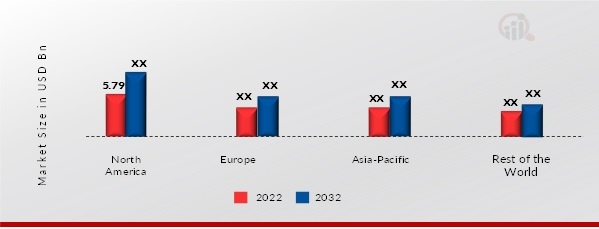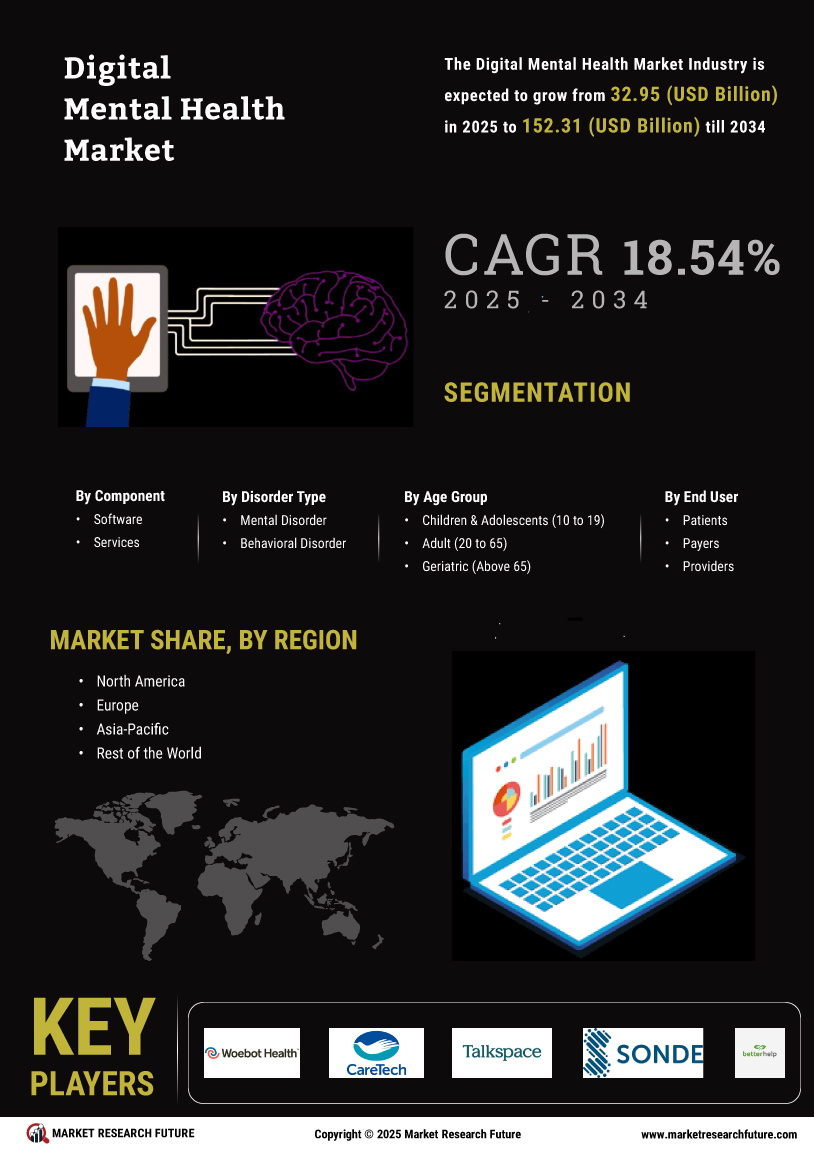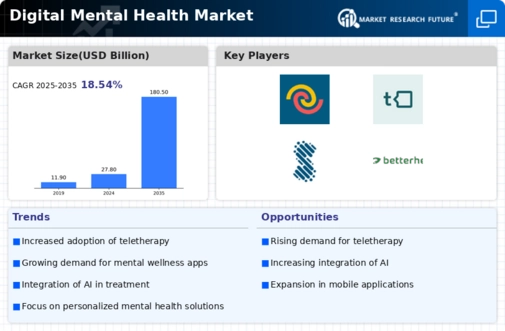By region, the study segments the market into North America, Europe, Asia-Pacific, and the Rest of the World. North America accounted for the largest market share of over 29.72% in 2022 due to increasing awareness of mental health needs, and a technologically advanced population, region provides fertile ground for the development and adoption of digital solutions. The region's robust telecommunication infrastructure and strong investment environment further enhance its technological leadership, fostering innovation in digital mental health solutions. Moreover, the presence of established healthcare systems and diverse providers contributes to the integration of these solutions into mainstream care.
Further, the major countries studied are: The US, Canada, Brazil, Germany, France, the UK, Italy, Spain, China, India, Japan, South Korea, and Australia.
FIGURE 3: DIGITAL MENTAL HEALTH MARKET, BY REGION, 2022 & 2032 (USD BILLION)

Source: Secondary Research, Primary Research, Market Research Future Database and Analyst Review
Europe's digital mental health landscape is marked by significant strengths and opportunities, as well as notable weaknesses and threats. The region benefits from a growing awareness of mental health, fostering greater acceptance and openness to seeking help. Technological advancements, including AI-powered therapy tools and virtual reality exposure therapy, contribute to accessible and innovative solutions. The support from European Union initiatives, such as the Mental Health in All Policies framework and funding programs, further promotes the development and adoption of digital mental health solutions. The multilingual accessibility of digital platforms enhances inclusivity, catering to diverse European languages.
Furthermore, the Germany digital mental health market held the largest market share in 2022 and UK digital mental health market is the fastest growing market in the Europe region.
The Asia-Pacific region is witnessing a surge in the adoption of digital mental health solutions, fueled by several key strengths. Over 60% of the population owns a smartphone, opening doors to a plethora of mental health apps and platforms. Stigma surrounding mental health is gradually fading, creating a more receptive environment for individuals to seek help through digital channels. Developers are increasingly catering to the diverse needs of the region by creating multilingual and culturally sensitive solutions. Moreover, governments are also playing a proactive role by promoting and funding promising initiatives.
Moreover, China digital mental health market held the largest market share in 2022 and India digital mental health market is the fastest growing market in the Asia-Pacific region.






